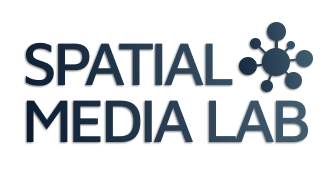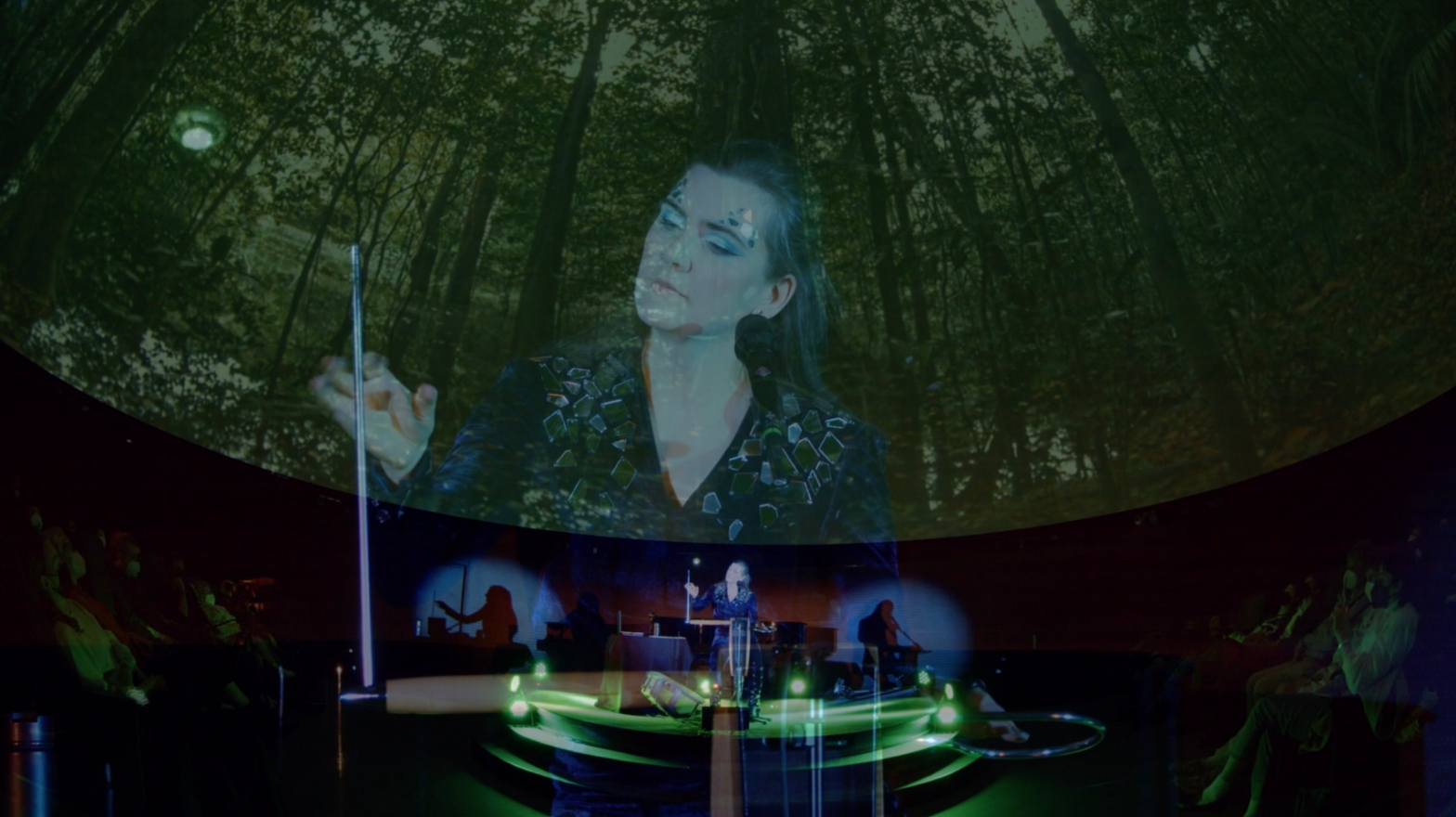
Carolina Eyck – Thetis 2086
Atmos Mix & Album Release Concert
05 & 06 May 2022 @ Zeiss-Großplanetarium Berlin
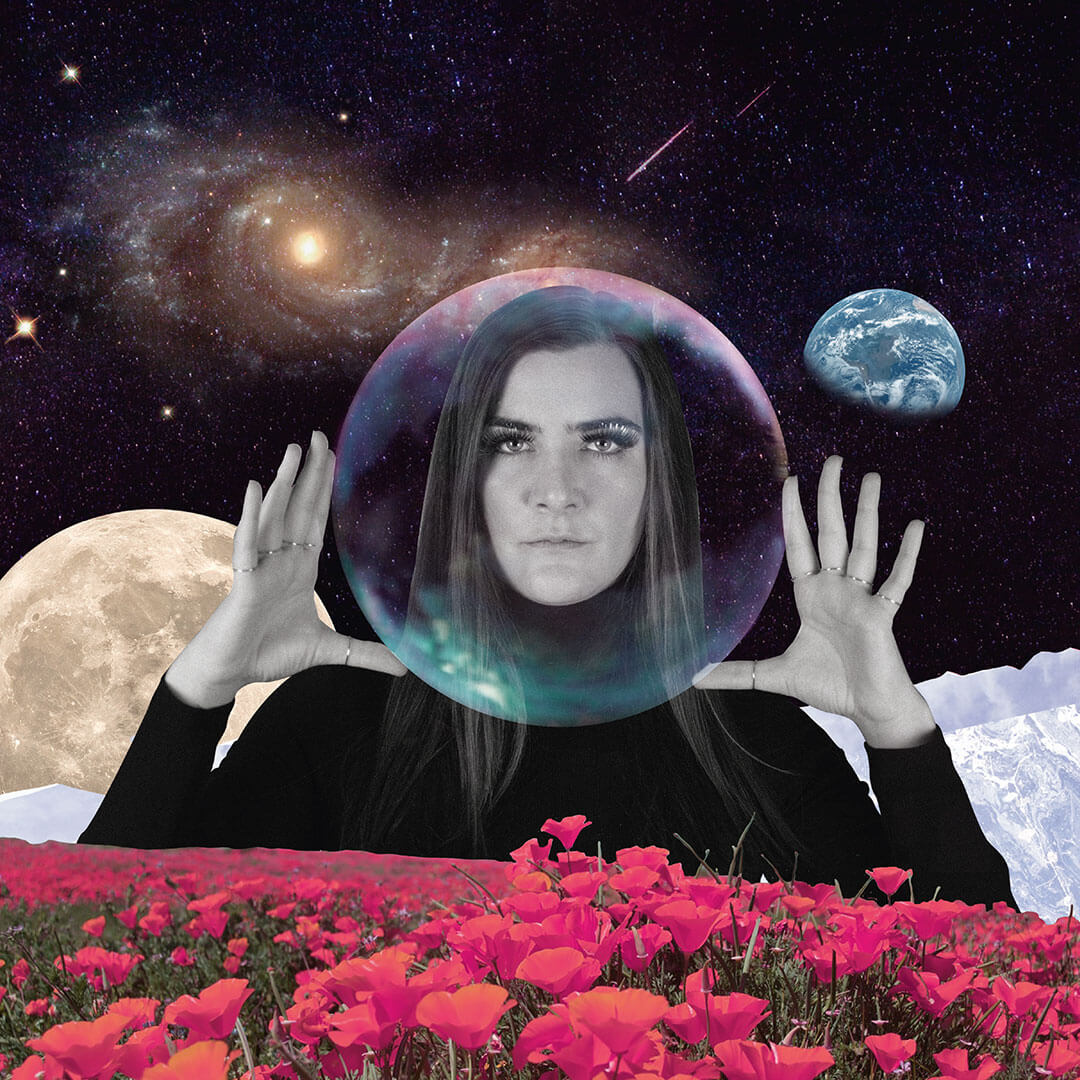
From September 2021 through May 2022 the Spatial Media Lab worked with world-renowned thereminist Carolina Eyck to mix her ambient crossover classical album Thetis 2086 for Dolby Atmos and to run the live sound for her debut album concerts in the Zeiss-Großplanetarium in Berlin.
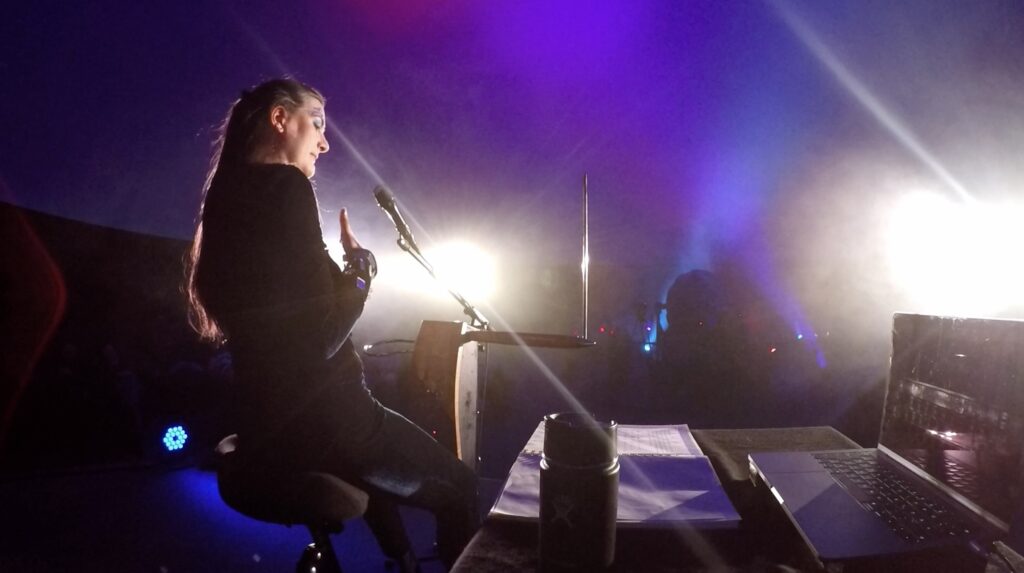
In September of 2021, Andrew Rahman (Spatial Media Lab) saw Carolina Eyck perform at Superbooth and noticed that the sound was in quadraphonic. Intrigued he asked Carolina what was her tech stack for live performance. Turns out she was using Ableton Live with the Envelop ambisonic suite for max4live which she controlled using a custom built MIDI controller made for her by a friend, Daniel Protheroe. This lead to a discussion of her wanting to perform in a planetarium and needing her album mixed in Atmos.
The first deadline was to get the album mixed in Atmos. We started by looking at her existing Ableton projects to see what her audio pipeline was for the tracks. After which we determined that we would mix the project first in 3rd order ambisonics, as she was already using Envelop on most of the tracks, then render out the speaker channels for a Dolby Atmos setup, then run those through the Dolby Atmos Renderer (more on this later). But first, she needed to complete the stereo/binaural version of Thetis 2086 with her producer Remco Hazewinkel. For this she used a custom binaural renderer made for her by Daniel Protheroe to ensure the mix would work well both in headphones and speakers. After completing the stereo mix, she rendered all of the stereo stems, and then rendered the 3rd order ambisonic stems from Envelop to provide to us. Upon collecting all of the stems we used our 3rd order Reaper template to encode each of the stereo tracks into ambisonics, then of course integrating the 3rd order ambisonic stems into it.
After preparing the sessions, a lot of initial mixing work was done using headphones and our Headtracker. After everything was pre-mixed for a 7.1.4 studio, we had a visit to the KOST Showroom in Berlin, Mitte to mix on the monitors. Two session in the KOST Showroom and then more fine-tuning in headphones before having a listening session at David Kamp’s studio in Berlin, Pankow. After making some important adjustments it was time for our final session before rendering in the Immersive Lab studio in Berlin, Buch. Thanks to Eric Horstmann of Immersive Lab for helping us with the final renders of the ADM files.
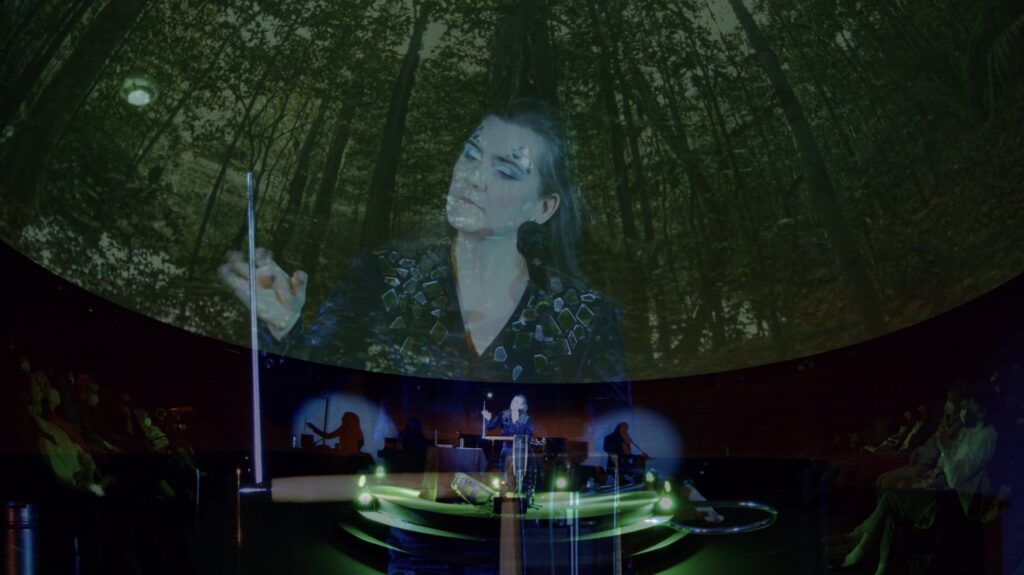
Since we were using a very unique pipeline during all of this—Stereo/Ambisonics to full 3rd order Ambisonics to Dolby Atmos—we made some very important learnings along the way.
- Dolby Atmos setups typically have full-range speakers in the L and R position and therefore you should place your bass sounds there.
- There is no direct way to access the LFE via Ambisonics, so when rendering out to the speaker channels using the IEM SimpleDecoder, it’s important to make the roll-off very low. We ultimately settled on a roll-off of 40hz.
- The Dolby Atmos Renderer has a tendency to clip the binaural renders, so when rendering to them it’s good practice to lower the volume quite a bit.
Thetis 2086 was released worldwide on April 15th, 2022 and you can hear the album in Atmos on Apple Music if you have AirPods Pro, AirPods Max, or AirPods 3rd Generation (make sure to turn on the headtracking).
Through the process of mixing her album, we had already prepared each track in full 3rd order Ambisonics, making preparation for the full 3D planetarium show quite easy. The only things we needed to determine were which elements she would play live and which elements would be rendered into the backing tracks. She settled upon having the main Theremin and vocal track in each song to perform live. Upon settling this, we rendered the backing tracks and loaded them into a new Reaper Project.
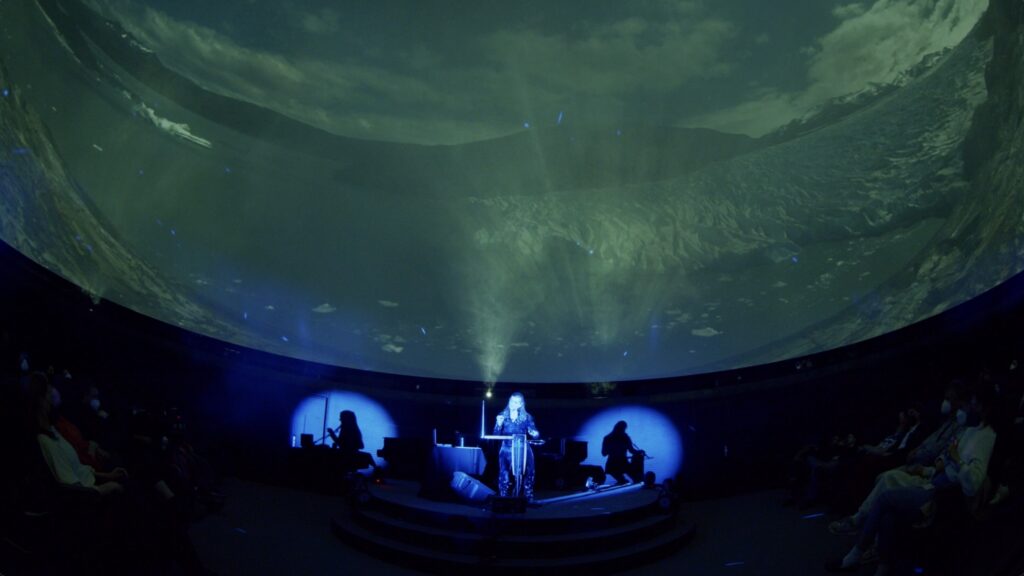
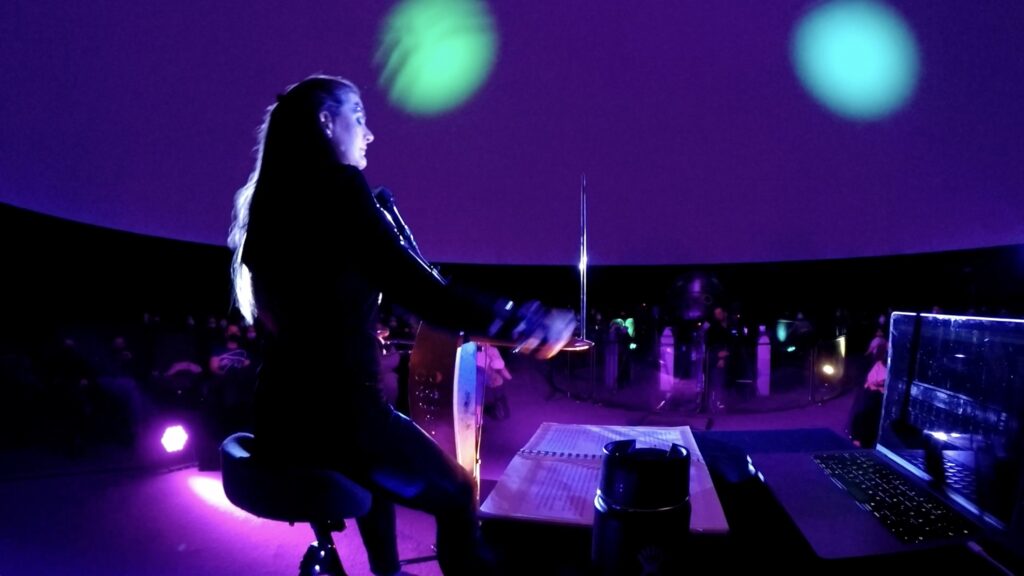
For the show, we then connected her Theremin and vocal microphone into a stagebox and routed it into the XI-Machines audio server as inputs. We then connected her custom MIDI controller to the server using the BomeBox so she could pan her Theremin around the dome, just as she did during the quadraphonic performance at Superbooth.
It was a lot of fun working on this project and we learned so much along the way. This project proved to us that we can create an entire work in ambisonics and then only at the very last step render it to Dolby Atmos for release on Apple Music. This is what influenced us to use the same pipeline for Discovery Zone’s Library Copy Do Not Remove, which we hope will be released on Apple Music by the end of this year.
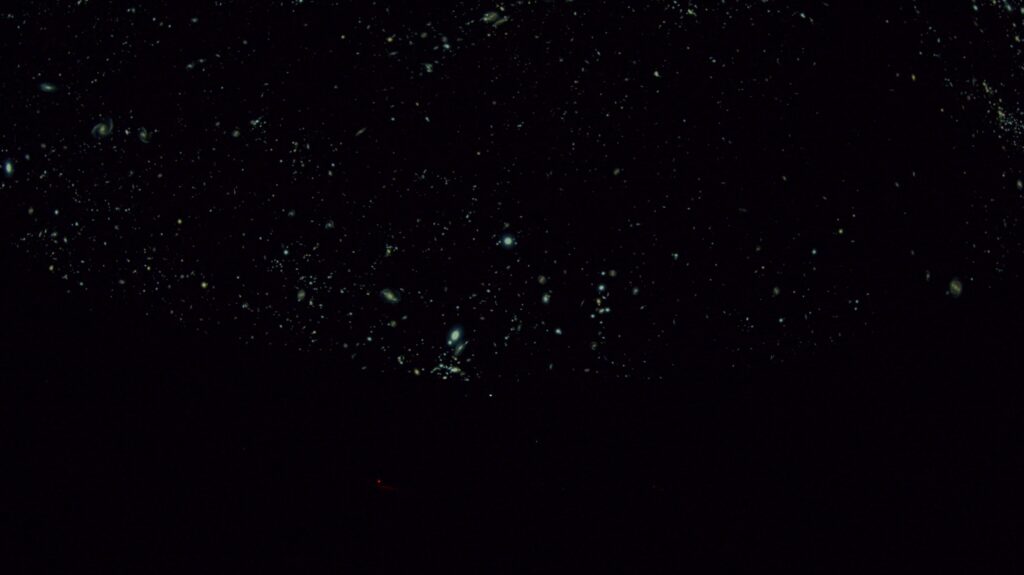
Links and Credits
Carolina Eyck Instagram
Photo Credits: Jan Paschen
Here is a nice video clip of the show made by Jan Paschen.
